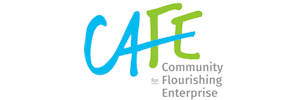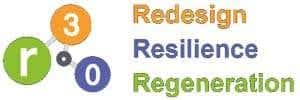Introduction
Money still defines success in much of today’s world. However, the Multi-Capital Approach shows that financial capital alone cannot support thrivable living, resilient societies, or blossoming ecosystems. While money drives decisions in boardrooms and households alike, this narrow focus fails to solve complex challenges like climate change, inequality, and mental health. Indeed, the pandemic and recent disasters exposed the limits of economic models based solely on financial returns (Clemente-Suárez et al., 2021). To advance, society needs a broader, more inclusive understanding of value, one grounded in Systems Thinking and aligned with post-growth models (Paulson & Büchs, 2022).
As a response, the Multi-Capital framework, backed by groups like the Capitals Coalition, expands the definition of capital to include natural, human, social, cultural, and produced capitals alongside financial capital (Gibassier, 2025). This aligns with thrivability, which goes beyond sustainability to promote the flourishing of all life. Viewed through this lens, societies and ecosystems can become more resilient, equitable, and regenerative, qualities essential to both a Regenerative Economy and a well-being economy.

Source: Micheile Henderson on Unsplash
Why Financial Capital Alone Falls Short
The Evolving Portrait of Success
Historically, success meant earning a high income and accumulating material wealth. Emotional health, purpose, and life satisfaction rarely counted; money alone defined success. However, modern psychological research paints a very different picture. Positive psychology and well-being science now emphasise that true success encompasses much more than money (Ryff, 2022). For example, studies show that strong relationships, personal growth, and purpose predict life fulfilment better than income (Ruggeri et al., 2020).
Moreover, concepts such as a “psychologically rich life”, which values diverse and meaningful experiences, have emerged as new dimensions of success (Oishi & Westgate, 2025). Today, flourishing means living with purpose, noticing beauty, and embracing authenticity, beyond financial status (da Piedade Fernandes, 2024). In short, today’s science-driven view of success aligns with a holistic sustainability and integrated value systems, where individuals thrive not because of their bank accounts, but through the richness and depth of their lived experiences (Oishi et al., 2021).
Systemic Cracks in a Financially-Driven Model
Increasingly, the cracks in current socio-economic systems are becoming visible. Climate change, biodiversity loss, inequality, and mental health crises demonstrate that money-driven models are failing to protect both people and the planet (Fisher & Hodroff, 2021). In response, a shift to Systems Thinking seems urgent, recognising life as dynamic, interconnected, and multidimensional. Within this view, Multi-Capital thinking and thrivability offer a better way to define success, one that supports people and the planet (Rockström et al., 2023).
Recognising the Limits of Financial Metrics
Beyond financial capital, there are forms of value, like social trust, mental health, and ecological stability, that monetary metrics routinely fail to capture. For example, the Wellbeing Economy Alliance (WEAll) consistently points out that growth in Gross Domestic Product (GDP) does not inherently translate into improved quality of life or ecosystem vitality (Bhaskar & Tripathi, 2023). On the contrary, GDP-focused thinking hides deeper issues like poor mental health, broken communities, and ecosystem decline (Casau et al., 2024). Increasingly, global institutions are now acknowledging this shortfall. The International Monetary Fund (IMF), for example, has acknowledged that economies overly fixated on financial metrics routinely underinvest in public goods, human well-being, and natural capital. The 2023 report shows strong returns from disaster resilience, demonstrating how aligning money with broader forms of value is central to a well-being economy (IMF, 2023).
Toward Regenerative and Thrivable Systems
In response to these shortcomings, the Sustainable Development Solutions Network (SDSN) calls for a Regenerative Economy that restores ecosystems, strengthens communities, and upholds dignity, rather than chasing profits. Consequently, moving beyond financial capital, it urges systems that regenerate natural, human, social, and cultural capital while fostering equitable and ethical relationships (Talmage, 2022). The goal isn’t just basic income. Instead, it’s building conditions for all life to thrive through holistic value, not just wealth (Minarro et al., 2021).

Source: SumUp on Unsplash
Understanding the Multi-capital Model
To further illustrate this shift, the Multi-Capital Approach shows that thriving systems depend on and shape many forms of capital. Crucially, these capitals are not separate; they interact constantly. This is where Systems Thinking is needed to understand their complex relationships.
Beyond Money: The Six Capitals of a Thrivable Economy
The multi-capital model defines six essential capitals (IFRS Foundation, 2025):
- Financial Capital: Funds available for production or services, gained through investment, operations, or grants.
- Manufactured Capital: Human-made objects used in production: roads, buildings, and infrastructure.
- Intellectual Capital: The knowledge, systems, and innovations that foster human development and post-growth models.
- Human Capital: Skills, experience, and motivation of people, plus their ethical alignment and capacity to innovate.
- Social and Relationship Capital: Trust, networks, and institutions that build cooperation and legitimacy.
- Natural Capital: Earth’s life-support systems: air, water, soil, biodiversity, and ecosystems.
Traditional economics often converts all value into money. However, clean air, social trust, and cultural identity can’t be priced without losing their meaning or causing harm. These capitals are deeply linked. Systems Thinking helps reveal their connections. Thus, evaluating a policy or business decision needs integrated value systems beyond financial capital to capture full multidimensional impacts (Khan et al., 2022).
When Financial Value Conflicts with Human and Social Capitals
Take surrogacy as an example. At first glance, surrogacy may seem like a mutual benefit: an income for the surrogate and a child for the parents. In many places, the process is contract-based and legal. However, from a multi-capital and thrivable lens, deeper concerns emerge using Context-Based Metrics:
- Human Capital: Many surrogates act out of financial need, often lacking legal rights or emotional support. In some countries, they cannot revoke consent after pregnancy (da Costa, 2023).
- Social Capital: The practice may widen inequality—wealthy clients, poorer surrogates—and reduce women’s roles to transactions (Cheney, 2022).
- Psychological Well-being: Breaking maternal bonds can cause trauma for both mother and child, with lasting emotional effects (Pereira, 2022).
- Ethical Value Dynamics: Does the payment uphold the surrogate’s dignity and autonomy? Does it promote the right relationship (Zhao, 2023)?
Thus, financially profitable surrogacy raises serious ethical and human issues. A multi-capital lens reveals what traditional economic models overlook (Piersanti et al., 2021).

Source: Micheile Henderson on Unsplash
Thrivability vs. Sustainability: Rethinking Money and Value
Sustainability and thrivability are similar but reflect very different ways of thinking, especially about money and value. On one hand, sustainability focuses on reducing harm and preserving resources. It relies on tools like cost–benefit analysis and efficiency metrics to minimise damage. In this approach, financial capital is managed to avoid loss, creating incentives for “doing less harm,” but rarely for restoring ecosystems or advancing social equity (Birkeland, 2022). On the other hand, thrivability shifts the focus. It ensures money is not just used to avoid harm, but to create the conditions where people and nature thrive. Finance becomes a lever for regeneration, justice, and shared well-being (Guan & Zhao, 2024).
For example, a sustainable city may install solar panels to cut emissions and costs. A thriving city goes further, building community-owned energy, green spaces, public health infrastructure, and inclusive economies (Demchenko et al., 2025).
Thus, sustainability asks: How can we stay within limits?
Meanwhile, thrivability asks: What future are we building—and how can money support all life?
Furthermore, Regenerative Economics reinforces the shift with the principles of holistic sustainability and post-growth models, where well-being replaces profit as the ultimate metric. Financial decisions are judged by how they build integrated value systems across all capitals, not just profit.
How Multi-capital Thinking Transforms Decision-Making
For example, consider a city planning a new highway. Financial returns might justify it, but multi-capital thinking expands the view:
- Natural Capital: Will ecosystems be degraded? What’s the long-term carbon footprint?
- Human Capital: How will residents’ health, mobility, and well-being be affected?
- Social Capital: Will it build or fragment community connections?
- Cultural Capital: Will it honour or disrupt local identity?
Likewise, the Entity Model sees every organisation or person as part of a living system. Well-being depends on healthy relationships across social, ecological, and economic spheres. This approach supports balanced, ethical decisions where capitals work together, not in competition.
Even the Sustainable Development Goals (SDGs) are useful, but are often treated in isolation. Multi-Capital and thrivability thinking connect them, using systems-based, context-aware analysis.

Source: Kanchanara on Unsplash
Real-World Applications of the Multi-capital Approach
Importantly, the Multi-Capital Approach has moved beyond theory. In recent years, governments, businesses, and communities have been using it to guide real decisions. Institutions now see that value goes far beyond financial capital and that tracking all capitals builds systems that are resilient, fair, and future-ready (Ooi, 2025).
- Global companies are adopting tools like the Natural Capital Protocol and the Social & Human Capital Protocol to embed multiple capitals in decision-making.
- Moving beyond GDP, New Zealand evaluates national progress on human and ecological well-being: a clear application of multicapital governance (Ortynsky et al., 2025).
- B Corps embrace integrated reporting, measuring impacts across financial, social, environmental, and cultural capitals, creating transparency and accountability (Iodice & Bifulco, 2025).
- Regenerative business models go further than circularity; they aim to restore natural systems, revitalise communities, and deepen cultural resilience (Loza Adaui, 2025).
Multi-capital thinking helps organisations see their full impact: from ecosystem health to social trust and human well-being. As a result, it allows decision-makers to align actions with the needs of both people and the planet (Sempels, 2025).
Designing a Thrivable Future: Living in Balance with All Capitals
Ultimately, a thriving society does more than survive; it enables people, ecosystems, and future generations to flourish. It shifts from harm reduction to active well-being, guided by Systems Thinking and Multi-Capital value. In this vision, economies regenerate instead of depleting. Success reflects the health of natural, social, and human capital, not just GDP (Amin, 2024). Crucially, money fuels long-term well-being, not short-term gain.
- Education systems nurture emotional intelligence, creativity, and systems awareness. Students learn to collaborate, adapt, and contribute to a regenerative future.
- Public policies are shaped by intergenerational equity and Context-Based Metrics, ensuring decisions remain within social and ecological boundaries.
- Built environments integrate with nature, using biophilic design, renewable energy, and green infrastructure to support both people and the planet.
- Cultural and social systems value diversity, belonging, and meaning. Art, heritage, and traditions build social resilience.
- Finance and investment focus on life-serving goals, backing circular economies, social enterprises, and local care.
Thrivable societies value right relationships, ethics, and regeneration across all capitals. The key question shifts from “how to sustain?” to “what future will support all life?”

Source: Towfiqu Barbhuiya on Unsplash
Conclusion
In summary, rethinking money as the sole metric of success reveals the deeper work of transforming how value is defined, measured, and acted upon. As explored throughout this article, a thrivable future depends on embracing a Multi-Capital Approach, grounded in Systems Thinking and orientated toward holistic sustainability (Sanchez-Planelles, 2022). But insight alone is not enough; tools and actions must follow.
That’s where the THRIVE Platform offers a practical way forward. Built around the same six capital model discussed here, it enables users (governments, businesses, educators, and communities) to assess real-world performance using Context-Based Metrics across environmental, social, and economic systems. This is not theory, it is applied thrivability in action.
For example, by enabling interactive scenario testing through sliders, datasets, and historical trends, users can simulate the outcomes of strategic decisions, whether in business, government, or civil society. Questions like “What is the effect of phasing out fossil fuels?” or “How would a 10% reduction in food waste improve social and ecological health?” are explored quantitatively, using science.
Explore how the THRIVE Platform works and how its tools can help build systems that regenerate, uplift, and endure.
Achieving THRIVE goals
Progress toward thrivable living demands more than policy reform or technological upgrades; it requires a fundamental shift in how money and value are defined, allocated, and measured.
Achieving thrivable living means investing in systems that regenerate natural and human capital, support dignity, and enable equitable participation in social and economic life. While SDG10: Reduced Inequalities highlights the importance of fairer outcomes, a Multi-Capital Approach reveals that inequality is not just a social issue but a systemic imbalance in how different forms of capital, including money, are distributed and valued.
In the realm of Metrics: Health & Well-Being, standard economic indicators often neglect essential contributors to prosperity, such as mental health, social trust, and access to nurturing environments. Although SDG3: Good Health and Well-Being addresses medical access, it rarely questions whether financial investments enhance holistic health. Context-Based Metrics close this gap by linking money to real-world thresholds, ensuring that financial capital serves life, not the other way around.
Similarly, Sharing & Solidarity: Equity & Equality calls for resource flows that uplift those most marginalised. SDG2: Zero Hunger, for instance, focuses on food access, but without systemic change in financial priorities and production incentives, hunger persists. Systems Thinking reveals how economic choices ripple across all capitals, and how equitable resource distribution can lead to regenerative, rather than extractive, economies.
Ultimately, thrivable systems redirect financial flows to where they generate enduring value, not just profits, but shared well-being and resilience across all capitals.
A Thrivable Framework
The THRIVE Framework provides a regenerative model that redefines how value is assessed, moving beyond money as the dominant benchmark. It helps evaluate whether actions contribute to systems where all capitals (natural, social, human, cultural, manufactured, and financial) are nurtured, not depleted.
Through the Multi-Capital Approach, money is understood as one capital among many, not the master of all. It cannot replace ecosystem services, human dignity, or social trust. This perspective resists the reduction of all value to financial terms and insists on preserving the distinct, irreplaceable roles each form of capital plays. Systems Thinking ensures financial decisions reflect the interconnectedness of ecological, economic, and cultural systems. Context-Based Metrics anchor financial performance to local and planetary thresholds, making value creation responsive, relevant, and responsible.
To explore how THRIVE puts these principles into action, visit the THRIVE website, where a rich array of resources supports the shift toward regenerative systems and multi-capital thinking. The Articles offer emerging insights on transformative frameworks; the Podcast features global voices reimagining value and success; Whitepapers present evidence-based research on complex societal transitions; live Webinars and Workshops bring together practitioners and scholars to co-create real-world solutions. The Newsletter keeps readers informed about the latest events, tools, and thought leadership. Together, these resources invite all sectors to reimagine prosperity, not as the accumulation of money, but as the collective capacity for all forms of life and capital to thrive.























